How The treatment Works
At Cosmetic Laser Solutions MedSpa, we specialize in the effective treatment of spider veins using advanced laser technologies. Our minimally invasive procedures are designed to target and eliminate unsightly veins, helping you achieve clearer, healthier-looking skin.
Spider Vein Removal & Laser Vein Treatment in Boston, MA
During the laser vein removal procedure, a special hand piece delivers heat to the targeted vein. We use 2 different laser devices for vascular conditions: Candela GentleYAG® laser and Magma IPL.
This heat forces the blood vessel to coagulate, causing it to be slowly destroyed and absorbed by the body. The process can take up to 30-minutes to complete and the recovery time is minimal.
What Are Spider Veins & Why Do They Appear?
Spider veins are small, thread-like sized damaged blood vessels that appear close to the skin’s surface, often forming web-like patterns. They commonly develop on the face, chest, or legs and can be red, blue, or purple in color. While typically harmless, spider veins can cause discomfort and may lead to more serious issues if left untreated
While they are not painful, spider veins are not aesthetically pleasing and they can be embarrassing. Depending on your particular needs, we would select a device best suited to your condition.
Laser can quickly and effectively remove spider veins with minimal discomfort. You should not have sun exposure in the area to be treated pre- and post-treatment for at least 4 weeks.
Besides spider veins on your legs, we can also treat vessels that are on other areas of your body, such as the neck or chest. Additional vascular conditions such as angiomas and rosacea can also be treated with a laser device.
Safe & Effective Laser Vein Therapy for Clear, Healthy Skin and More
Laser treatment is an effective, safe, and relatively painless method to reduce spider veins. The laser beam causes the vein to collapse and your body absorbs the damaged vessel over a 4-6 week period.
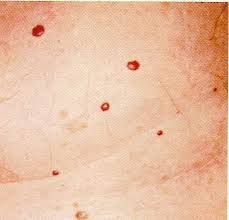
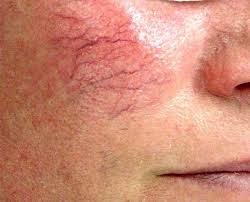
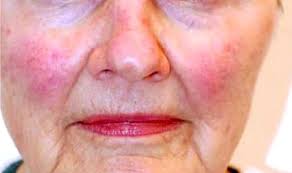
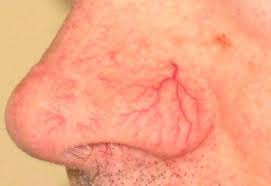
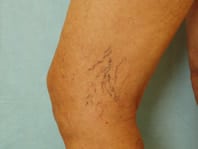
Causes of Spider Veins & Vascular Conditions
Several factors contribute to spider veins, broken capillaries, and rosacea, including:
✔ Heredity: A family history of vein conditions
✔ Hormonal Changes: Puberty, pregnancy, menopause
✔ Prolonged Sitting or Standing: Poor circulation weakens veins
✔ Pregnancy & Weight Fluctuations: Increased pressure on blood vessels
Advanced Laser Treatment for Spider Veins in Boston
We utilize advanced laser devices, including the Candela GentleYAG® and Magma IPL, to treat vascular conditions effectively. During the procedure, a specialized handpiece delivers targeted heat to the affected vein, causing it to coagulate and eventually be absorbed by the body. The treatment typically takes up to 30 minutes, with minimal recovery time required.
Best Laser Vein Treatment in Boston for Facial & Leg Veins
✔ Facial Vein Removal Boston – Treats cheek veins, nose veins, and broken capillaries
✔ Leg Spider Vein Treatment – Effective for blue and red leg veins
✔ Rosacea Laser Treatment Boston – Reduces redness and visible blood vessels
✔ Broken Capillary Treatment Boston – Removes tiny red veins on face and legs
Pre-Treatment Recommendations
To ensure optimal results:
- Avoid sun exposure in the treatment area for at least four weeks before and after the procedure.
- Consult with your physician about temporarily discontinuing medications that may affect healing.
- For facial treatments, cease using certain skincare products such as Retin-A or as advised by our specialists.
Post-Treatment Care & Expected Results
✔ Minimal swelling & redness that fades in 24-48 hours
✔ Avoid sun exposure for 4 weeks after treatment
✔ Compression stockings may help speed up healing for leg vein removal
✔ Visible results in 4-6 weeks, with full improvement over several months
Book the Best Spider Vein Removal in Boston Today!
Get expert spider vein removal near you at Cosmetic Laser Solutions MedSpa in Boston. Our laser vein specialists provide personalized facial vein removal, leg vein treatment, and broken capillary removal for smoother, vein-free skin. Book your consultation now!
To get started on treating your spider veins or other vein-related issues, schedule a consultation today with Cosmetic Laser Solutions MedSpa Massachusetts by filling out our online form or booking an appointment.
Note: Individual results may vary. A consultation with our specialists will help determine the most appropriate treatment plan for you.Treatable Areas
Frequently Asked Questions About Spider Vein Removal
Depending on the size of the vessel, it may take 1-3 treatments to dissolve the capillary. These will be spaced 6 weeks apart as needed.
There is a pinching sensation during the treatment. A mild sunburned sensation may existed for several hours. For legs a cooling spray is released after each pulse to ease discomfort and provide cooling to the skin.
Yes. Treatment needs to be on your natural skin color. Additionally, you should limit sun exposure for at least 4 weeks post-treatment.
Most patients after treatment have some swelling and pinkness within the treated sites. This will diminish over a 24-48 hour period. On occasion, superficial crusting and blister formation may occur, especially in the treatment of leg veins. If this occurs, patients are asked to clean the area gently with mild soap and water twice daily and apply an antibiotic ointment.
It depends. With laser treatments for spider veins, you do not have to wear support hose. We do recommend support hose should you need sclerotherapy.
Laser treatment for facial blood vessels and leg veins has been free of significant complications. There is a chance of temporary pigmentation disturbances. On occasion, post-operative crusting and blistering are noted but this is not associated with any significant increased risks of complications.
The lasers we offer do not treat varicose veins.
